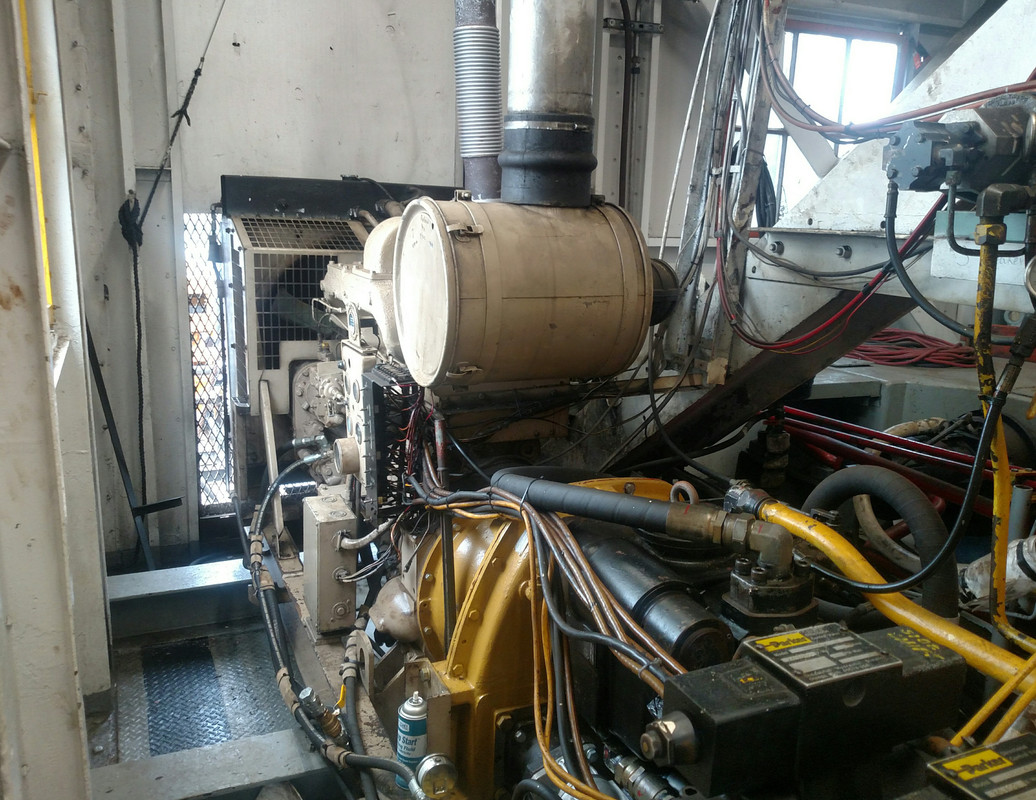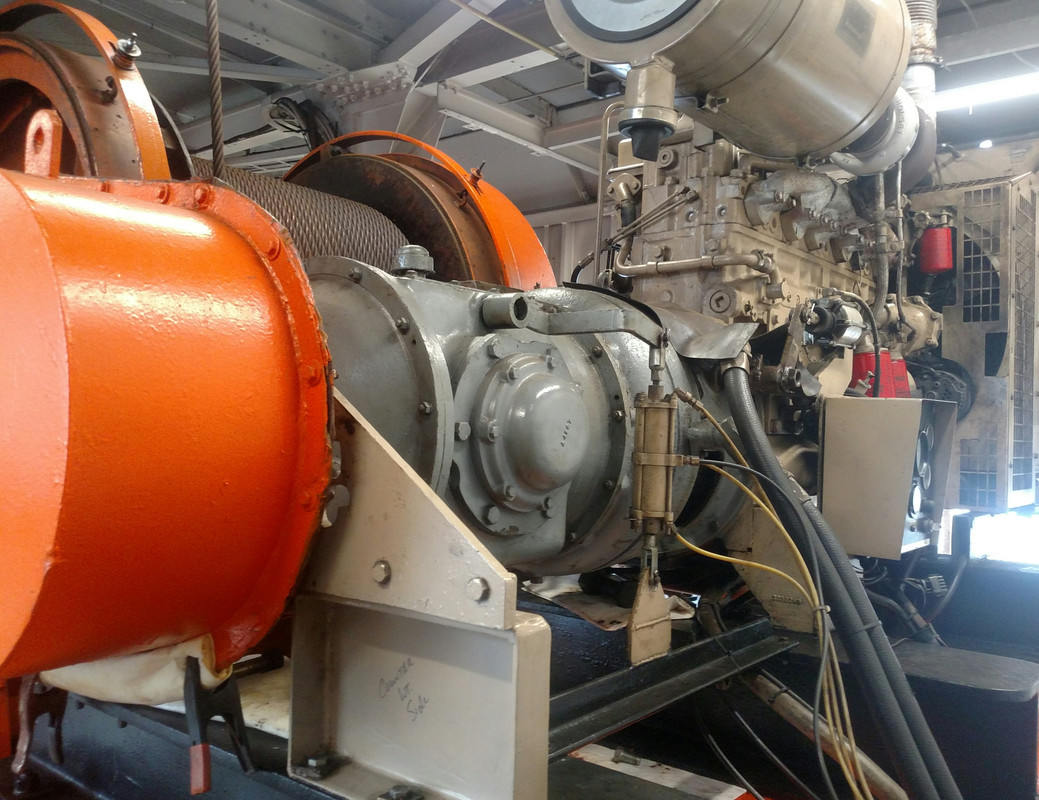 12-24-2021, 01:32 PM
12-24-2021, 01:32 PM
|
#31 (permalink)
|
|
It's all about Diesel
Join Date: Oct 2012
Location: Porto Alegre, Rio Grande do Sul, Brazil
Posts: 13,032
Thanks: 0
Thanked 1,720 Times in 1,534 Posts
|
Quote:
Originally Posted by clarknova

I drove a 2015 school bus with a Cummins 6.7 for two years and I never once saw the regen light turn on. Probably because I drove a rural route. I don't recall if the oil was black in that one.
|
Enabling the engine to run for a longer time at higher RPMs decreases the soot buildup at the DPF, so there are fewer and shorter regen cycles. On a sidenote, I guess those rural routes didn't have any of those no-idling policies.
|
|
|

|
 Today Today
|
|
|
|
 Other popular topics in this forum...
Other popular topics in this forum...
|
|
|
|
 12-24-2021, 02:34 PM
12-24-2021, 02:34 PM
|
#32 (permalink)
|
|
Master EcoModder
Join Date: Jul 2015
Location: Louisiana
Posts: 361
Thanks: 275
Thanked 132 Times in 102 Posts
|
Quote: "...Some newer diesels have an exhaust choke that activates when cold to increase backpressure and thus temperature, to help warm the engine. This creates a very distinct and noticeable sound on some Powerstroke engines especially that sounds like a jet turbine even at idle...."
My 1996 F250 Ford pickup truck has a 7.3L diesel engine with such a warm-up valve; they call it an Exhaust Back Pressure Valve, or EBPV . It is actuated via a 12VDC signal and operates via oil pressure. A lot of users eliminate the EBPV if and when it begins to leak oil or otherwise malfunction rather than repair or replace it.
Others, like myself, put a $5 electric switch on the EBPV's 12VDC control wire so that we can turn it on and off via the switch. The reason: for all practical purposes, the EBPV acts as an exhaust brake, which is very helpful coming down steep grades when towing a heavy load. I've often wondered why Ford and International, the engine's actual maker, didn't advertise it as an exhaust brake in addition to being a fast warmer-upper. If they had done so, they would have had the first diesel pickup truck on the market with an exhaust brake, which has now become a standard feature for diesel pickups.
__________________

|
|
|

|
 12-24-2021, 02:42 PM
12-24-2021, 02:42 PM
|
#33 (permalink)
|
|
Master EcoModder
Join Date: Apr 2011
Location: Tacoma WA
Posts: 1,401
Thanks: 743
Thanked 529 Times in 345 Posts
|
Quote:
Originally Posted by clarknova

I own some IDI engines and a common-rail. All of them have black oil, despite a disabled EGR and oil catch can. AMSoil sells a bypass oil filter that claims to remove soot and it's on my wish list.
We have a large mechanically-injected Cummins generator at work and the oil always looks pristine. I'm not sure what the secret is. Maybe because it never runs above 16% load except during semi-annual maintenance.
I drove a 2015 school bus with a Cummins 6.7 for two years and I never once saw the regen light turn on. Probably because I drove a rural route. I don't recall if the oil was black in that one.
|
The clean oil in the Cummins is a function of a properly broken in engine that is running a light fixed load. Throttling up/down for load induces more overfueling opportunities.
I worked as a deck engineer on a derrick crane that had a 350 Cummins for the hydraulics, and it was the same. At 250 hours it was a slightly darker amber color. It got throttled some, but the load was relatively light. The throttle applications were usually for just speeding up what you were doing at the moment.

In comparison, the 400 Cummins on the frictions had dark oil right after change, more the typical diesel pattern. It worked hard on a big load.

Ironically the 350 was swapped out for a Tier 4 Cat engine for an emissions credit with the feds. It had to be destroyed to get the $$ towards the Cat.
Here is the Cat in the same spot.

Here is a video of the 350 doing a little throttling, while picking up another crane off the bank and putting it on a barge. This is a largish derrick with 185' of boom and a nice 140 ton chart. The Bucyrus Erie 30B with boom and no counterweight was about an 85,000 pound pick at 65' radius.
https://youtu.be/2vJz6_Qr1BE
__________________

2007 Dodge Ram 3500 SRW 4x4 with 6MT
2003 TDI Beetle
2002 TDI Beetle
currently parked - 1996 Dodge 2500 Cummins Turbodiesel
Custom cab, auto, 3.55 gears
|
|
|

|
|
The Following User Says Thank You to skyking For This Useful Post:
|
|
 12-26-2021, 03:19 PM
12-26-2021, 03:19 PM
|
#34 (permalink)
|
|
It's all about Diesel
Join Date: Oct 2012
Location: Porto Alegre, Rio Grande do Sul, Brazil
Posts: 13,032
Thanks: 0
Thanked 1,720 Times in 1,534 Posts
|
Quote:
Originally Posted by skyking

Ironically the 350 was swapped out for a Tier 4 Cat engine for an emissions credit with the feds. It had to be destroyed to get the $$ towards the Cat.
|
Even though the emissions credit seems to be worth, destroying such an engine which could be still operating somewhere else, eventually not within the United States and mayve repurposed as a remanufactured truck engine. |
|
|

|
|
The Following 2 Users Say Thank You to cRiPpLe_rOoStEr For This Useful Post:
|
|
 12-26-2021, 11:24 PM
12-26-2021, 11:24 PM
|
#35 (permalink)
|
|
EcoModding Lurker
Join Date: Feb 2021
Location: West coast
Posts: 32
Thanks: 5
Thanked 15 Times in 13 Posts
|
It’s much more likely that someone would just put it in another piece of equipment in the US instead of paying to export it. So the EPA wants the engine permanently disabled.
Diesels with variable geometry turbos will add restriction by closing the turbo vanes during warm up and braking.
|
|
|

|
 12-27-2021, 09:14 AM
12-27-2021, 09:14 AM
|
#36 (permalink)
|
|
Master EcoModder
Join Date: Apr 2011
Location: Tacoma WA
Posts: 1,401
Thanks: 743
Thanked 529 Times in 345 Posts
|
Quote:
Originally Posted by cRiPpLe_rOoStEr

Even though the emissions credit seems to be worth, destroying such an engine which could be still operating somewhere else, eventually not within the United States and mayve repurposed as a remanufactured truck engine.
|
they did the same tier 4 engine conversion on a dump barge, which was really a waste. The dump barge engine runs a fraction of working time.
__________________

2007 Dodge Ram 3500 SRW 4x4 with 6MT
2003 TDI Beetle
2002 TDI Beetle
currently parked - 1996 Dodge 2500 Cummins Turbodiesel
Custom cab, auto, 3.55 gears
|
|
|

|
 05-09-2022, 02:42 AM
05-09-2022, 02:42 AM
|
#37 (permalink)
|
|
It's all about Diesel
Join Date: Oct 2012
Location: Porto Alegre, Rio Grande do Sul, Brazil
Posts: 13,032
Thanks: 0
Thanked 1,720 Times in 1,534 Posts
|
I was recently trying to find information regarding the suitability of Steyr Monoblock engines to some alternate fuels, and it was mentioned the unit-injection system would either require some fuel density detector or having the injection adjusted individually for each fuel used. At least with a common-rail engine, it's simpler to just do a remap instead... An associate professor from Illinois Tech had even proposed the usage of gasoline on turbodiesel engines with just a remap.
https://www.autoevolution.com/news/d...te-186175.html |
|
|

|
 05-09-2022, 03:48 AM
05-09-2022, 03:48 AM
|
#38 (permalink)
|
|
Mechanical engineer
Join Date: Jan 2009
Location: Kitee (Finland)
Posts: 1,277
Thanks: 273
Thanked 846 Times in 418 Posts
|
- There is optimal injection timing for best efficiency
- There is optimal boost level for certain injection level at certain RPM
- There is optimal cam (or cams) timing
You need to find those out by doing sweep runs and tests.
In general the EGR is not boosting efficiency so its not in use. I should still try to test will it help at low rpm and injection levels as there is a reason why it migth help to boost little bit efficiency.
In my own ecu programs is a AFR limitation to set 19 meaning, I will never go richer than that. There is no need. At higher rpms AFR can go over 45 if you want to get best efficiency.
|
|
|

|
 05-10-2022, 04:12 PM
05-10-2022, 04:12 PM
|
#39 (permalink)
|
|
It's all about Diesel
Join Date: Oct 2012
Location: Porto Alegre, Rio Grande do Sul, Brazil
Posts: 13,032
Thanks: 0
Thanked 1,720 Times in 1,534 Posts
|
There might be only a handful of times when EGR is actually beneficial. When it comes to cam timing, even though most Diesels don't resort to a variable cam timing, it may even be suitable to provide some internal EGR effect similar to what Mazda applied to that SkyActiv-D, and that was not bad at all. At least it's way less likely to cause carbon buildups to the intake manifold...
|
|
|

|
 05-11-2022, 03:19 PM
05-11-2022, 03:19 PM
|
#40 (permalink)
|
|
High Altitude Hybrid
Join Date: Dec 2020
Location: Gunnison, CO
Posts: 2,125
Thanks: 1,164
Thanked 603 Times in 477 Posts
|
Good question.
On a gasoline powered engine with a throttle the EGR makes the charge produce less power since it has less gasoline which in turn allows the throttle to open more to produce the same amout of power again. A more open throttle means less pumping losses.
But in a diesel there is no throttle, so how could EGR in a diesel increase efficiency?
__________________

|
|
|

|
|